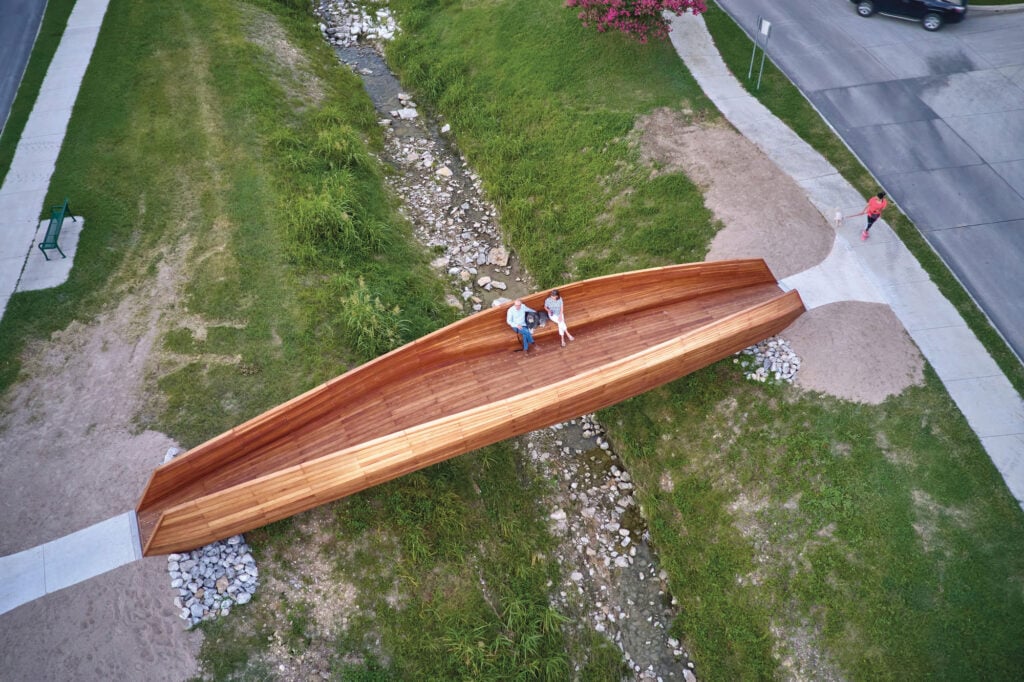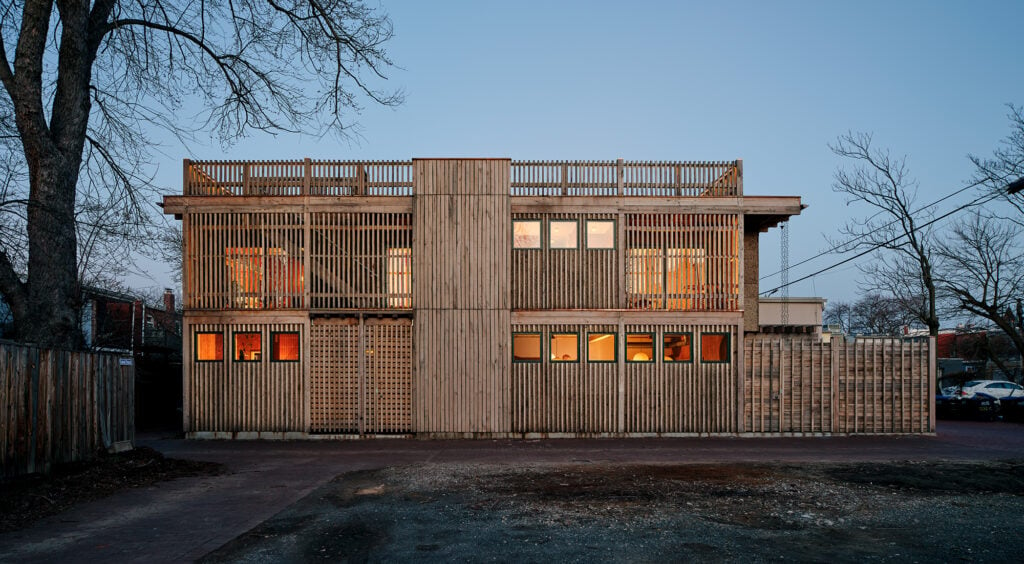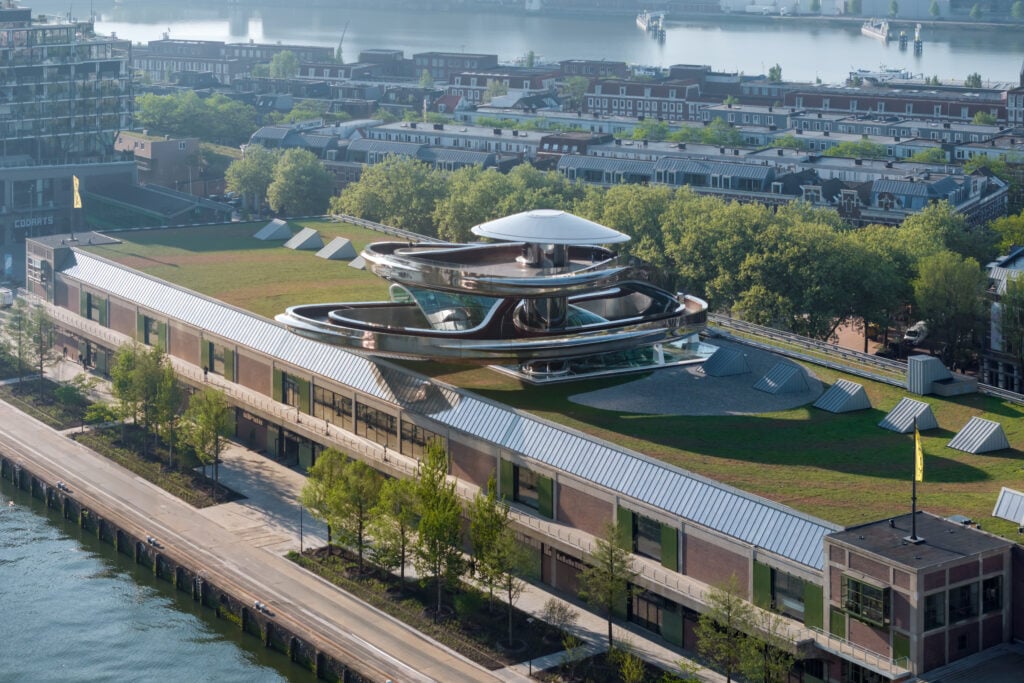
January 31, 2022
A Pedestrian Bridge in Texas Expresses the Idea of Community In Its Design
Disruption in technology is often associated with negative consequences like social disorder, environmental degradation, and economic marginalization. Facebook (now Meta) founder Mark Zuckerberg summed up this ethos with his early motto “Move fast and break things.” But disruption can also be beneficial. When done right, it can encourage health, wellness, efficiency, and equity. In that spirit, Metropolis is thrilled to share the winners of its first Responsible Disruptors program, honoring A&D technology projects that represent significant change for the better.
There is an elegant simplicity to Portland, Oregon–based Volkan Alkanoglu Design’s pedestrian bridge Drift that belies its disruptive nature. The 62-foot timber and steel structure, which bends in ways that evoke its driftwood inspiration, crosses a creek bed in a residential neighborhood of Fort Worth, Texas. Commissioned by Fort Worth Public Art, the undertaking could have been as simple as building a bridge and adding ornamental elements. But Alkanoglu, founder of his namesake firm saw a greater opportunity: “I thought about this as a project in which we might be able to trigger a different way of thinking about how we enhance certain places and their communities,” he recalls.
The designer turned to what he calls “plug-and-play urbanism,” a strategy in which infrastructural elements are built off-site—often in a matter of hours—and dropped into place. “We didn’t have the budget for building scaffolding, which ultimately means you build the bridge twice,” Alkanoglu explains. “So we tried to be innovative and just think, What can we do to build only one bridge?” The solution merged traditional techniques with computational design. Drift was fabricated off-site in Indianapolis, incorporating a steel armature clad with CNC-cut and flip-milled timber planks. Each plank was custom-cut and then stack-laminated into a single distinctive form. The completed bridge was transported to Texas by an oversize truck and lifted into place with a crane.
Because of the bridge’s minimal on-site construction process, impact on the creek and its surrounding community was significantly reduced. “It’s not just something that stitches the community back together.… When we visited recently, a lot of people shared how they have started walking more because of the bridge,” said Alkanoglu. Drift’s curved form, which enhances stability, incorporates a concave hull with railings and benches. “Considering the current condition of infrastructure and civic places in the United States, I’m thinking about how we can potentially use this process to upgrade, update, and enhance those spaces,” Alkanoglu continues.
Would you like to comment on this article? Send your thoughts to: [email protected]
Latest
Profiles
BLDUS Brings a ‘Farm-to-Shelter’ Approach to American Design
The Washington D.C.–based firm BLDUS is imagining a new American vernacular through natural materials and thoughtful placemaking.
Projects
MAD Architects’ FENIX is the World’s First Art Museum Dedicated to Migration
Located in Rotterdam, FENIX is also the Beijing-based firm’s first European museum project.
Products
Discover the Winners of the METROPOLISLikes 2025 Awards
This year’s product releases at NeoCon and Design Days signal a transformation in interior design.





